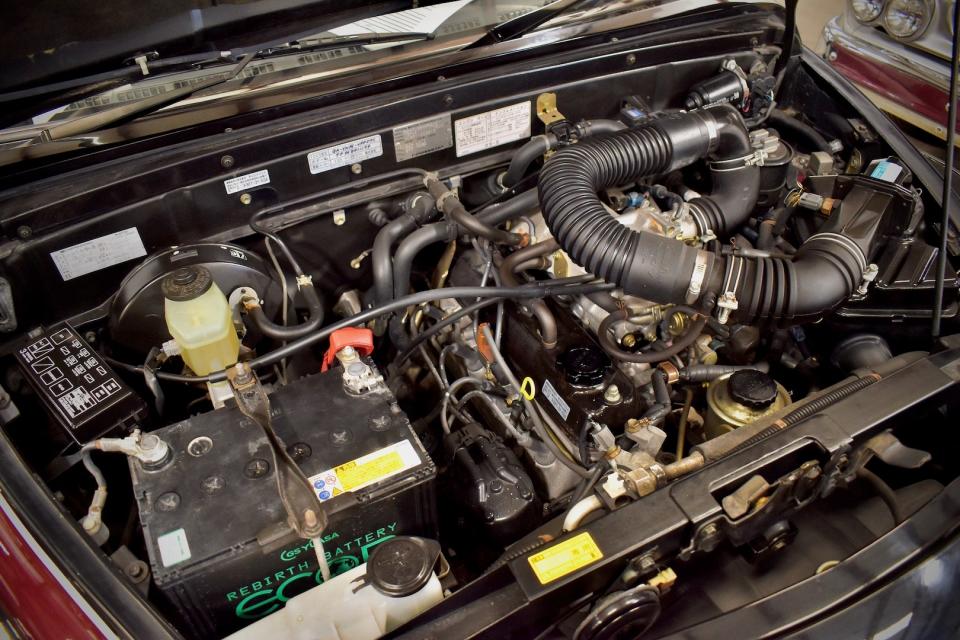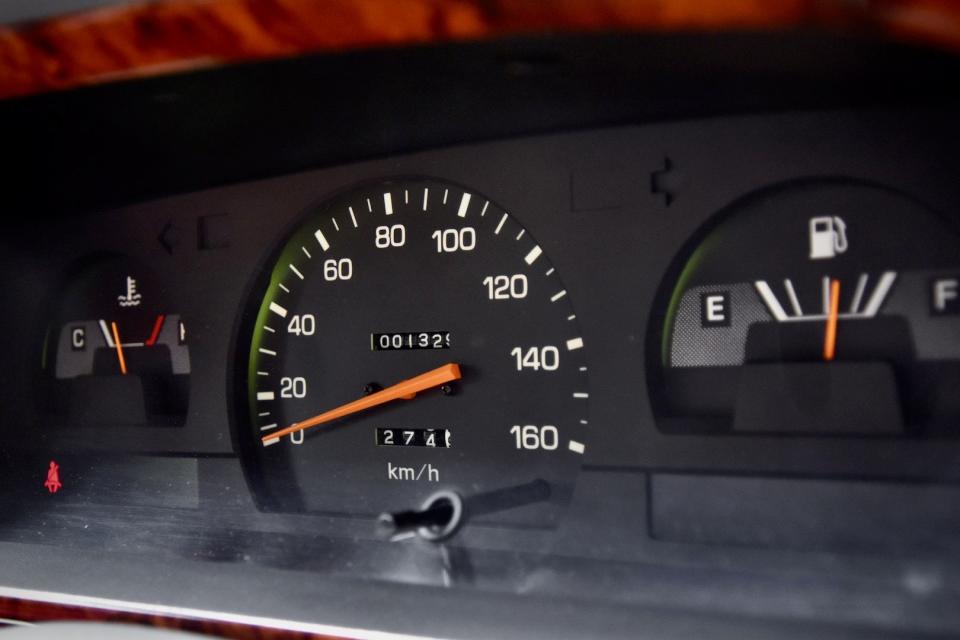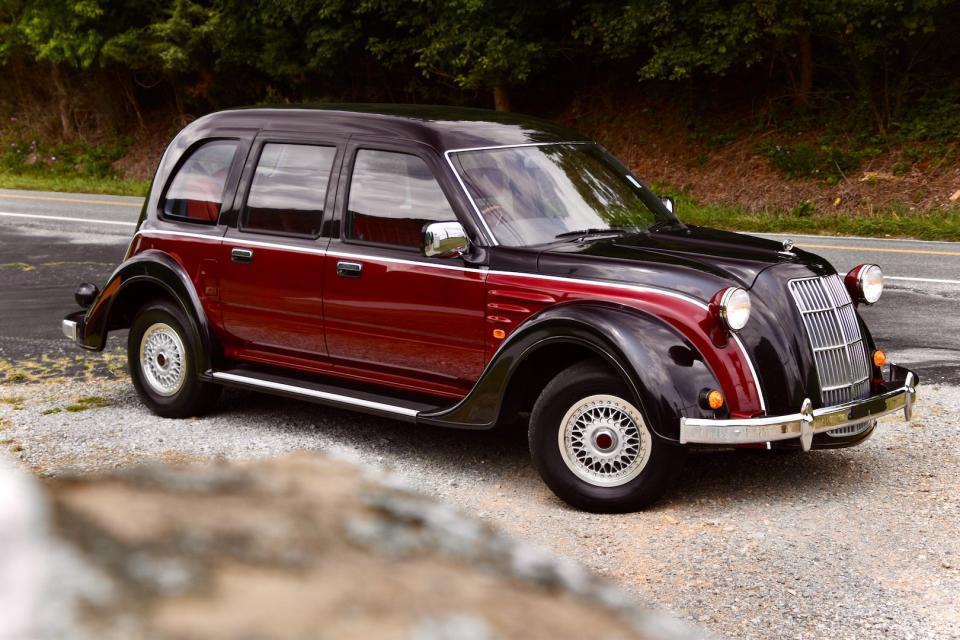1996 Toyota Classic Review: The Toyota PT Cruiser, Literally

Owning a pre-1950s car seems like it’d be fun only until something breaks. Then it’s a nightmare, with tough-to-find parts and shops refusing to touch it, all for a car you can’t drive further from your house than AAA’s tow radius. Restomodding can fix that but often at a six-figure price. However, there is an almost ideal middle ground, the 1996 Toyota Classic, which looks and feels enough like an old car to scratch your vintage itch. Kinda, anyway.
The Toyota Classic is a strange compromise between classic and modern that’s only become more dissonant over the 27 years since it was built. Its body passes for prewar while its 1980s mechanicals balance reliability with simplicity. In theory, it’s the best of both worlds.

In practice though, it gives the Toyota Classic an appeal that’s barely more than skin-deep. It’s a kitschy neoclassic veneer on a 1980s pickup truck, and it feels like it. That’s not necessarily a bad thing, and the Classic is an interesting car in its own right. But it also feels like taking a wrong turn down memory lane.
[Editor's Note: JDM Week at The Drive is brought to you by Duncan Imports, one of America's largest importers and resellers of Japanese domestic market vehicles. Big thanks to owner Gary Duncan for opening up his private collection and allowing us to take a few for a spin. If your interest is piqued, you can see the company's full inventory here.]
1996 Toyota Classic Specs | |
|---|---|

Hey, Doesn’t That Kinda Look Like A…
I know what you’re thinking: it’s like Toyota made a Chrysler PT Cruiser. That comparison is more apt than you realize because both the Toyota Classic and PT Cruiser were inspired by the same car. While Chrysler’s was a direct homage to the 1934 Chrysler Airflow of its own past, Toyota’s was less straightforward. It was modeled after Toyota’s first passenger car prototype, the AA, which was a stylistic copy of the Airflow. So in that sense, yes, it is a Toyota PT Cruiser.
The similarities go deeper than inspiration, too. Both were trucks in one sense or another, the Chrysler legally to flatter its CAFE ratings, the Toyota because it was based on a pickup. Beneath that body is the ladder chassis and drivetrain of a single-cab, long-bed Hilux pickup which had only just been replaced by the Tacoma in the States. That means double-wishbone torsion-bar independent front suspension and power from one of the simplest engines imaginable. It’s a 2.0-liter four-cylinder, with eight pushrod-actuated valves. (Like God intended, Peter Holderith would say.) It has fuel injection but makes a mere 97 horsepower and 118 lb-ft of torque. For a transmission, you could only get a four-speed automatic.
The interior and body were designed and manufactured by Technocraft, Toyota’s special production division. Technocraft’s factory widebody Supras and MR2s—which also got a gorgeous but little-known convertible—are highly coveted rarities to this day. It made only 100 Classics for Toyota’s 60th anniversary, so these are more than three times rarer than even the hallowed 2000GT. In theory, that makes it pretty special.




From any distance, the Toyota Classic looks as old as its muse, its body channeling primitive streamlining perfectly. Still, there are strange touches, like its fake front fender vents and obviously ‘90s multi-piece alloy wheel. They’re not that obvious though, and the Classic is a convincing enough prewar pastiche to pass as one. At least, until you walk up and see the interior.
You’ll be met by more bright red leather than my average Friday night, and unmistakable ‘80s Toyota Pickup plastic trim and switchgear. The shifter is a center console-mounted prindle with an annoying shift lockout, while the dash is a simple three gauges without so much as a tachometer. Its entire dashboard is visibly identical to a Hilux’s and differentiated only by the fakest wood you’ve ever seen outside, like, a PT Cruiser. If anything, it’s even tackier than the Chrysler.





What it isn’t is uncomfortable as the roofline is high enough to comfort an NBA player. Rear legroom is excellent, though there’s not a ton of elbow room—this is based on a small ‘80s pickup, after all. That also means it has a high seating position, low sills, and big windows for a respectable greenhouse. It also means visibility is fairly good, with the exception of the rear three-quarter owing to those huge D-pillars.
But you’ve got truck-sized side mirrors to fill the gap, and your view out as you drive is that of an old car. You scan the road over a real wood Nardi steering wheel and a hoodline straight out of the ‘30s; it passes for a classic out of the corner of your eye. It drives like the cars of yesteryear too, but not enough to make it unpleasant.



By that, I mean it drives like a body-on-frame vehicle—like a pickup truck. Figure that. That said, the handling dynamics of a small pickup designed in the ‘80s are a world apart from anything made during the Great Depression. Suspension design and tire technology progressed 50-plus years, and the result is a car that drives… fine. It jiggles like pickups do, but rides inoffensively.
While the seats are more comfortable than those of the outgoing Tacoma (just awful), they aren’t really bolstered at all. Any half-aggressive cornering quickly turns into a game of Jello. The rears also don’t fold down, so your storage options are an obtusely shaped trunk or your lap.





That’s not the point of the Toyota Classic, of course. The steering is slow and has less to say than your average Reddit commenter. There’s air conditioning, an audio system, and power windows. It doesn’t matter that it has a turning circle bigger than some city parks, you aren’t driving it in search of a tight, refined experience. Or one that’s too primitive, either.
Old cars can be a pain in the ass. Vapor lock, unsynchronized transmissions, primitive electronics and ergonomics, gas fumes—they can just be a bit much sometimes. Some people just want something unique to park at Trader Joe’s, not a project. A Toyota Classic is that car.





But so is a Nissan Figaro, and they’re a fraction as expensive. If your interest in cars goes more than surface-deep, you can quickly lose interest in the shallowness of the Toyota Classic. Credit where it’s due, it feels even more like an old car than it would’ve when it was new. Its hydraulic power steering, airy cabin, and lack of a touchscreen date it in a way we can now appreciate. It’s novel as a demulsified blend of styling trends, where ‘30s meets ‘80s meets ‘90s neoclassicism.
At the end of the day though, it’s just a weird-looking Hilux. And unless all that adds up to more than the sum of its parts for you, a Toyota Classic can be something you stop to examine at a car show—then move on from.

What To Know Before Owning
The Toyota Classic strikes an odd balance that just isn’t for everyone: vintage looks and driving dynamics that (while not exceptional) have aged reasonably. It’s new enough to not be fiddly, but old enough to be dead-simple to work on and fix—that narrowed engine bay notwithstanding. It’s a Hilux dammit, and those things will roam the Earth longer than we will. But it’s also just not as interesting as the cars it cribs from, so while it’ll sneak you into a prewar car show, it won’t steal it from a DeSoto or Packard. Or for that matter, a similarly priced ‘30s Chrysler Airflow.
That’s not to say there isn’t more enjoyment to find in a Toyota Classic, provided you’re comfortable modifying it. There’s a part of me that says, “Too special!” but if you can afford the tens of thousands of dollars these now cost (yikes), you can also afford to return one to stock. Again, it’s a Hilux underneath, and the possibilities are as broad as its aftermarket. I’m imagining the most cursed prerunner right now. You could also turn it back into a pickup in some sort of Smyth ute-like fashion if you don’t mind adding a touch of Chevy SSR to the equation.
Or hell, just swap in a 3S-GTE.

Verdict
The 1996 Toyota Classic isn’t much more than a novelty. It’s a funny-looking old SUV that’s not cheap and not that engaging to drive unless you modify it—which costs more still. It’s about as pricey as the Chrysler that inspired it but forfeits much of its character for ease of mind. I’m sure some people will dig the Toyota Classic for what it is, but I don’t think it’ll float most people’s boats. Mine has given the order to abandon ship.
Got a tip or question for the author? You can reach them here: james@thedrive.com

 Yahoo Autos
Yahoo Autos 